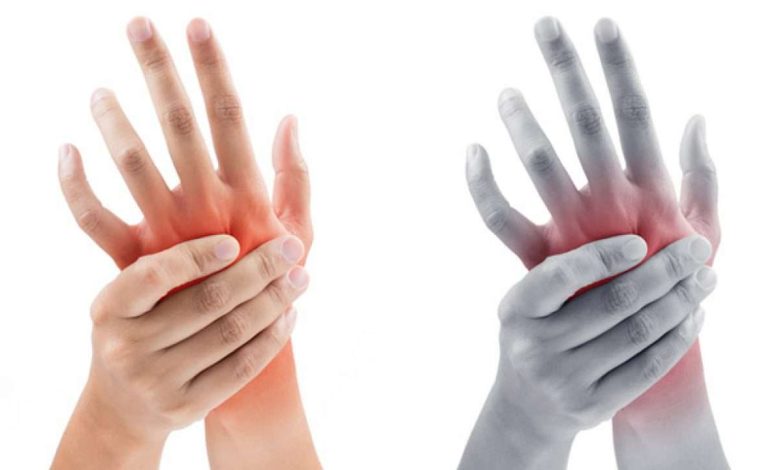Spasms, cramps in the arms and legs: what is this, causes, symptoms, diagnostics, treatment, prevention

Hand or foot spasms; Foot spasms; Carpopedal spasm; Spasms of the hands or feet; Hand spasms
Spasms of the arms and legs are involuntary contractions or twitches of the muscles in the arms or legs.. They can range from mild and infrequent to severe and frequent and can cause discomfort and interfere with daily activities.. In this article, we will look at the reasons, symptoms and treatments for spasms of the arms and legs, and when to seek medical attention and what to expect during a medical examination.
What is an arm or leg spasm?
Spasm of the arms or legs is a condition, characterized by sudden, involuntary contractions of the muscles of the arms or legs. Contractions may be short or last a few minutes and may be uncomfortable and interfere with daily activities.. Muscles, most commonly affected by spasms of the arms or legs, – are the muscles of the fingers, Brushes, feet and toes.
Causes of arm or leg spasms
The exact cause of arm or leg spasms is often unknown., but several factors are associated with this condition, including:
- Dehydration: Dehydration can cause muscle spasms, including spasms of the arms or legs.
- Overuse: excessive use of arm or leg muscles, eg, with repetitive movements, can lead to spasms of the arms or legs.
- Electrolyte imbalance. Electrolyte imbalance, such as low calcium levels, magnesium and potassium, can cause muscle cramps and spasms.
- Nerve damage: Nerve damage, eg, caused by peripheral neuropathy, can cause muscle contractions and spasms in the arms and legs.
- Medical conditions: some medical conditions, such as multiple sclerosis, Parkinson's disease and spinal cord injury, may cause cramps in the arms or legs.
Symptoms of spasms in the arms or legs
The main symptom of arm or leg spasms is involuntary contractions or twitches of the muscles in the arms or legs.. Contractions can range from mild and infrequent to strong and frequent.. In some cases, spasms can be painful.
When to contact a healthcare professional
If you experience frequent or severe spasms in your arms or legs, or if cramps interfere with daily activities, you should see a doctor. Besides, if you experience any of the following symptoms, you should seek medical attention:
- Weakness or numbness in the arms or legs
- Pain or swelling in the arms or legs
- Muscle spasms or stiffness
- Difficulty walking or doing other daily activities
Questions, that your doctor may ask
During your physical examination, your doctor will ask questions, to better understand your symptoms and medical history. Some of the questions, that your doctor may ask, include:
- How long have you had arm or leg spasms?
- How often do spasms occur??
- Are spasms accompanied by pain or discomfort??
- You notice weakness or numbness in your arms or legs?
- Are you experiencing any other symptoms, such as muscle spasms or stiffness?
Diagnosis of spasms of the arms or legs
To diagnose arm or leg spasms, your doctor will first conduct a physical examination, during which he will assess your muscle strength and check for signs of weakness or numbness. Your doctor may also do a nerve conduction test., to assess the function of your nerves.
Blood and urine tests may be done. Tests may include:
- Potassium level, calcium and magnesium.
- Hormone levels .
- Kidney Function Tests .
- Vitamin D levels ( 25-OH Vitamin D ).
- Nerve conduction tests and electromyography may be ordered, to determine the presence of a disease of the nerves or muscles.
Treating spasms of the arms or legs
Treatment for arm or leg spasms will depend on the underlying cause of the spasms.. Some common treatments for hand or leg spasms include:
- Medicines: over-the-counter painkillers, such as ibuprofen or acetaminophen, can relieve pain, associated with spasms of the arms or legs. More severe cases may require prescription muscle relaxants.
- Physiotherapy: physical therapy can help improve muscle strength and flexibility, reducing the frequency and severity of arm or leg spasms.
- Replacement of electrolytes: Replacement of electrolytes, such as calcium, magnesium and potassium, may help reduce the risk of arm or leg spasms.
- Bracing: Stretching the muscles in your arms and legs can help reduce the risk of spasms..
- nerve stimulation: nerve stimulation may be recommended in some cases, such as transcutaneous electrical nerve stimulation (CHANCE), to reduce the severity of spasms in the arms or legs.
Home treatment for arm or leg spasms
In addition to medication, there are several home remedies., which can help relieve spasms in the arms or legs, including:
Avoiding dehydration: drinking plenty of water can help reduce the risk of muscle cramps and spasms.
Avoid Excessive Workouts: avoid repetitive movements, which can cause overuse of muscles, which can help reduce the risk of arm or leg cramps.
stay active: regular exercise can help improve muscle strength and flexibility, reducing the frequency and severity of hand or foot injuries.
Used sources and literature
Chonchol M, Smogorzewski MJ, Stubbs JR, Yu ASL. Disorders of calcium, magnesium, and phosphate balance. In: Yu ASL, Chertow GM, Luyckx VA, Marsden PA, Skorecki K, Language MW, eds. Brenner and Rector’s The Kidney. 11th ed. Philadelphia, PA: Elsevier; 2020:chap 18.
Francis G.E., Lee S. Spasticity. In: Cifu DX, ed. Braddom’s Physical Medicine & Rehabilitation. 6th ed. Philadelphia, PA: Elsevier; 2021:chap 23.
Jankovic J, Just AE. Diagnosis and assessment of Parkinson disease and other movement disorders. In: Jankovic J, Mazziotta JC, Pomeroy SL, Newman NJ, eds. Bradley and Daroff’s Neurology in Clinical Practice. 8th ed. Philadelphia, PA: Elsevier; 2022:chap 24.
